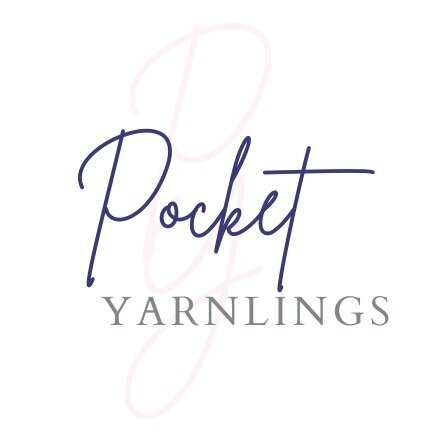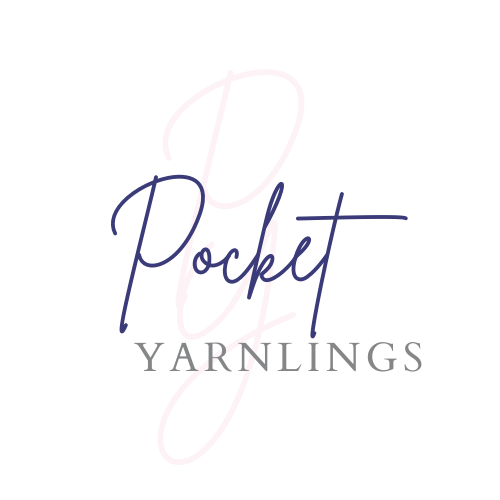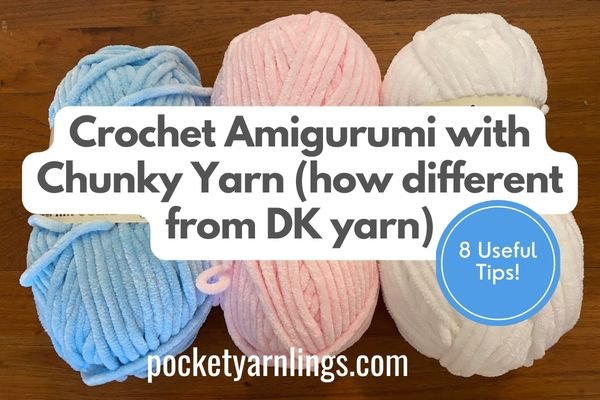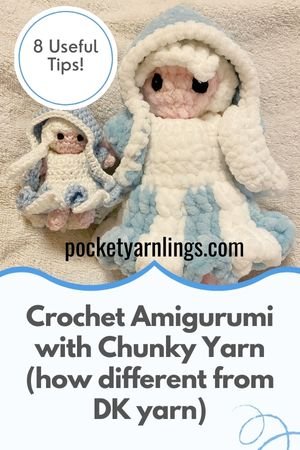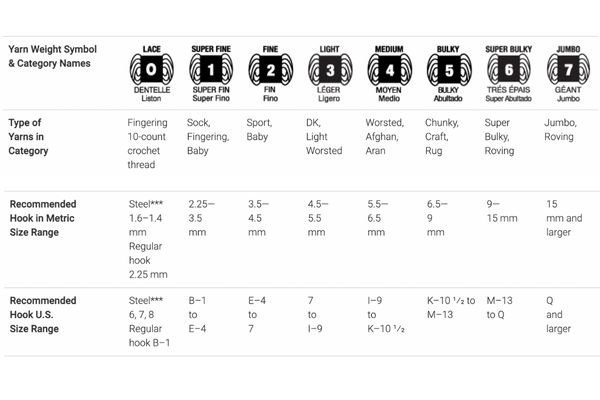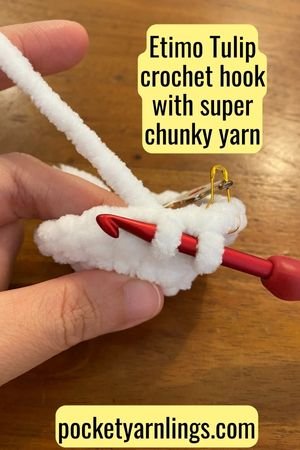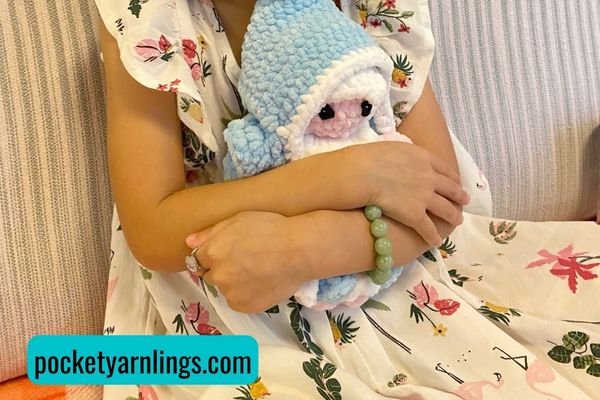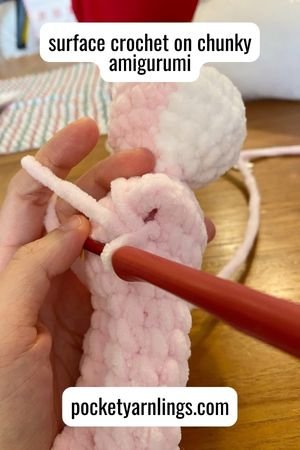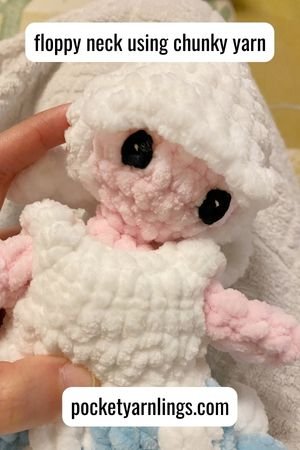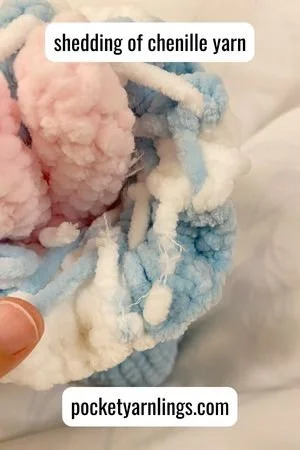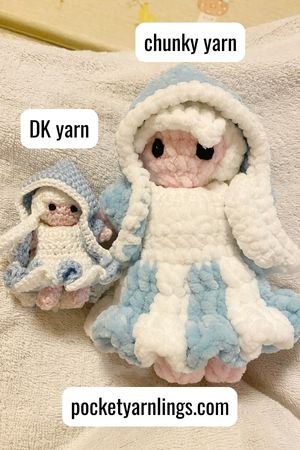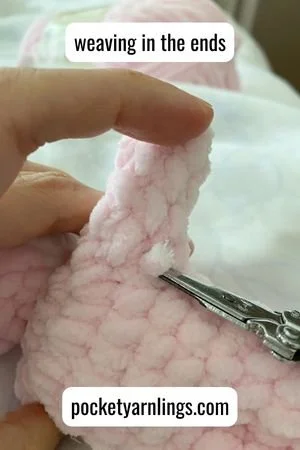Crochet Amigurumi with Chunky Yarn (how different from DK yarn) - 8 Useful Tips!
Starting off crocheting amigurumi with DK yarn is probably the commonest and easiest way for beginners to start. If you have seen those beautiful big huggable plushies, you must be wondering whether that ball of chunky yarn is worth it, am I right? Here I break down the many differences between DK and chunky yarn and why it might be worth it to just give it a try!
There are affiliate links in this post. We will receive a commission if you make a purchase through our affiliate link at no extra cost to you.
Table of Contents Show
What is chunky yarn?
Chunky yarn refers to thicker yarn that is used to crochet or knit items that are a bit heavier with thicker stitches, like garments, blankets or even carpets. Another name for chunky yarn is also bulky yarn, so yes they are the same and are used interchangeably. Take note that super chunky or super bulky yarn is even thicker yarn than chunky yarn and require even larger crochet hooks to pair with it.
They can be made up of acrylic, cotton, wool or polyester. For the purposes of this post and the examples in it, I will be discussing chunky chenille yarn, which is made up of polyester.
What is chunky yarn weight?
According to Craft Yarn Council, if you are specifically asking what size is chunky yarn, then it corresponds to category 5 or bulky yarn, in terms of yarn weight.
Based on Craft Yarn Council classification, here is a breakdown of the different yarn weights.
0 - Lace = thread (~1,2,3-ply)
1 - Super Fine = fingering (~4-ply)
2 - Fine = sport (~5-ply)
3 - Light = DK (~8-ply)
4 - Medium = worsted (~10-ply)
5 - Bulky = chunky (~12-ply)
6 - Super Bulky = super chunky (~14-ply)
7 - Jumbo = jumbo (~16-ply)
In terms of ply, ply is an approximation of the yarn weight and might not necessarily follow the CYC sequence below. Ply refers to how many strands of thread and bundled together to form one yarn strand.
Generally speaking, a higher ply count will mean the yarn is thicker, like how 8-ply yarn is thicker than 5-ply yarn. But it is important to note that higher ply yarn may not necessarily mean heavier yarn weight.
As for what ply is chunky yarn, it generally corresponds to approximately 12 ply yarn and for super bulky yarn, more like 14 ply yarn.
What is chunky yarn used for?
Because of its thicker consistency, it is the preferred weight to go to for larger items like pillows, floor poufs, rugs, blankets, sweaters, ponchos and baskets (even baby ones!). It is also increasingly popular now to try using chunky yarns to make amigurumi as well, which has been traditionally made with smaller yarn weight like DK yarn to make toys.
What happens if I use thicker yarn?
When choosing to use heavier or thickier yarn to crochet your amigurumi, it is another easy and fast way to size up the amigurumi. Without having to string 2 smaller strands together or change up the pattern to involve larger rounds, using a chunky yarn can transform the same mini amigurumi into a huggable plushie!
What is the best crochet hook for chunky yarn?
In reference to the suggestions made by Craft Yarn Council, the recommended crochet hook size for bulky yarn in metric size range is 6.5-9mm. Mostly for amigurumi, crocheters generally pick a smaller sized hook to avoid gaps in the final crocheted piece, usually about 1-2 sizes down from what is recommended. For the chunky yarn amigurumi examples I have here, I actually went down to a 4.5mm tulip crochet hook!
Can you make amigurumi with chunky yarn?
Yes of course! Using chunky yarn to make your amigurumi can add new textures and dimensions to your crocheted toys. Instead of having something that is palm-sized to play, you would end up with a bigger huggable, snuggleable (almost bolster-like) toy that your child loves!
For the most part, if you choose to make a chunky amigurumi, pick a pattern that says it was intended as such because the pattern designer made the piece in chunky yarn. The problem with transforming an intended DK-yarn-pattern to chunky format is that you might experience some difficulties along the way, as I will explain further on below.
But having said that, then you must be wondering why choose chunky yarn for amigurumi then? Here are a few answers why crocheters (me included!) have fallen in love with using chunky yarn for my amigurumi!
Benefits of chunky yarn for amigurumi
1. Bigger size
The biggest and most obvious reason is because of how much bigger and more huggable the final piece ends up looking. I must say my daughter also approves of the sizing up of my amigurumis!
2. Works up faster
Also because of the thickness of the yarn and the larger stitches you can crochet with each round, these amigurumi pieces do work up faster, as compared to using DK yarn to crochet up the equivalent size.
3. Final piece is neater
When using chenille yarn, the final piece ends up looking fluffy, because there are less obvious gaps in the stitches and the stray ends are less visible after weaving them in at the end.
4. Surface crocheting is easier
Finally one of my favourite reasons of recent times, surface crocheting is much bigger and easier. So for those of you who say surface crocheting on the limbs can be quite tight and small for fingering or DK yarn, then try scaling it up with chunky yarn - it is a lot more manageable for sure!
Is chunky yarn good for beginner crochet?
Since I mentioned all the benefits above, you must be thinking is chunky yarn good for beginner or is chunky yarn easy to work with? Unfortunately, I must say if you are just starting how and figuring out how to crochet amigurumi, then chunky yarn might not be the best or easiest place to start.
Drawbacks of chunky yarn for amigurumi
Here I will list some of the drawbacks with chunky yarn and then subsequently come up with some tips on how to hopefully work around them.
1. Difficult to see stitches
The thicker yarn weight causes less visible gaps in the final amigurumi, which also means in the process of crocheting, it might be more challenging to see the individual stitches and chains. Sometimes this can be even more pronounced when you are doing cluster stitches.
2. Floppy neck syndrome
You could get this problem with regular DK yarn if you make a longer neck for your amigurumi. In general, because my amigurumis have shorter necks, I don't really have this issue when using fingering yarn. But when I change over to chunky yarn, the weight of the yarn in the head component makes it flop down.
3. Coning at the beginning is more obvious
The coning effect at the top of the amigurumi could easily happen with other types of yarn weight as well, but it does seem to be particularly more prominent with chunky yarn. This can occur even when starting with a magic ring of 6 single crochet stitches, which is commonly used for starting spherical heads with DK or lighter yarn.
4. Lumpier appearance
As the size of the amigurumi is much larger with chunky yarn, there must also be accompanying larger quantity of stuffing inside them. If there is insufficient stuffing, the final amigurumi does not only look floppier or flatter in some parts, it might appear lumpier too!
5. Painful crocheting from larger movements
Using heavier yarn also means using a bigger crochet hook and larger rounds in the amigurumi, which translates to larger movements when crocheting. For some, this might cause some wrist pain, a contrasting kind of pain as compared to using tiny thread and micro crochet (which some crocheters dislike too).
I will go through some tips to help with these issues above subsequently. Below here are some additional drawbacks from using chenille chunky yarn that I have found while making my amigurumi chunky.
6. Frogging will thin out the yarn
This is especially true when using chenille chunky yarn, maybe less so with other materials like cotton or wool. If you make a mistake and start to pull on the yarn to unravel it, it can get caught or stuck, which makes the yarn shed and the strand gets thinner and thinner. Sometimes, it will just get tangled and you cannot untangle it.
7. Making a magic ring is more difficult
Along the same lines as the previous point, when making the initial magic ring and tugging on free end of yarn to close up the loop, chenille chunky yarn can get stuck and you might not be able to close up the hole. It is definitely going to make it more difficult for a beginner to master the basic magic ring.
8. Yarn shedding
Like the previous 2 points, this applies to chenille chunky yarn which is yarn shedding after you cut off excess yarn! It is actually quite an annoying property but unfortunately comes along with using this time of yarn. If you do not tuck it in, you will get free flowing shedding flakes coming out from the yarn at the ends. There are some ways around it, which I will mention below.
Can I use chunky instead of DK?
There are some who would ask if you could use chunky instead of DK, or chunky instead of worsted. Technically the answer is yes because you could use the same crochet pattern meant for DK and switch to chunky yarn instead. However, the different yarn weights do come with different properties so switching one for another is not so straight forward.
Like I mentioned above, if you choose to use chunky over DK, you might experience any or all of 8 points above which can be frustrating for a beginner, but might be fun for an experienced crocheter to try! So here I have come up with some tips to combat the issues you face above so that you can hopefully use chunky instead of DK yarn.
Tips for replacing DK yarn with chunky yarn
1. Using stitch markers
This might not be the best solution to stitches that are difficult to see but feeling the stitches might help and using multiple stitch markers if really necessary.
2. Inserting an extra cylinder in the neck
To help with floppy neck syndrome, you could crochet a small pipe using DK yarn and stuff it, then insert it into the neck region to help prop it up or some crocheters have suggested foam pipes for insertion. Making your own pipe means you can control the wide and length of it, to adjust to your doll. For animals, just crochet a broader neck and you should not get a floppy neck.
3. Start off with a larger round
In contrast to DK yarn where many patterns starts with a magic ring of 6 single crochet stitches, instead for chunky yarn, make it larger like a round of 10. This will help prevent the coning problem when you start off initially and the top of the head will be nice and flat.
4. Stuff, stuff, stuff!
You have to stuff more for chunky yarn, because the amigurumis are generally bigger, you will definitely need to stuff more. I would still use polyfil, instead of leftover yarn stash - imagine how much of that you would need to stuff!
5. Use ergonomic crochet hooks
Generally I would say use ergonomic crochet hooks for everything in general but it really does help for chunky yarn as well. Like I mentioned, since the rounds are bigger and more painful, then the gliding motion during crocheting is improved with ergonomic hooks. The good thing is you do not have to squeeze through tight stitches for chunky yarn!
6. Use looser tension
Using looser tension helps with frogging chunky chenille yarn and in turn reduces the shedding that occurs with tugging on the yarn. Also, I would suggest only use chunky yarn once you have the crochet pattern finalized. If you are doing pattern designing or tweaking, use DK yarn to experiment and conclude, only then move onto chunky yarn.
7. Start off a round with chain 2 and single crochet
If you are having difficulty with starting off magic rings with chunky yarn, you could just stop and try doing a slip knot, chain 2 and do multiple single crochet stitches into 2nd chain from hook. For more information on this technique to crochet circles, check out this article on 'how do you crochet different shapes in amigurumi'.
8. Weave in all the ends
You could use cotton or wool or acrylic chunky yarn instead of chenille yarn to avoid the yarn shedding problem. If you still choose to go ahead, there are a few options to try and fix this problem. For me, the easiest method was to weave in and stuff all the ends back into the amigurumi. I had the most problem when I left them out, for example when I made Emily's skirt below here.
Other options include glueing the stray ends, using a lighter to burn the stray ends off or simply to just tie a knot at the end. Like I said, easier to pick a crochet pattern with no loose ends and stuff all the leftover stray yarn back into the amigurumi so there is no more shedding.
Another thing I wanted to mention is that you could always mix and match chunky with DK yarn! I did that for Emily's eyes, decided to crochet a black circle with DK yarn and then sew it onto the chunky amigurumi's face.
Best chunky yarn for amigurumi?
Here are some suggestions for great chunky yarn for amigurumi. Personally I have only used the chenille one so I can say I love it. For the others, I have heard great things about them and they have great reviews. I will definitely want to try them out as well, especially the cotton one, and will update this post along the way. I included a combination of chunky and super chunky yarn since they are quite close in weight and the final amigurumi appearance are similar.
Chenille chunky yarn for amigurumi
Most of this post is talking about chenille chunky yarn for amigurumi so if you always wanted to make those squishable soft huggable amigurumi toys for your little ones, give this one a try.
Cotton chunky yarn for amigurumi
Cotton chunky yarn is a great way to avoid some common issues with chenille like the yarn shedding problem or even the difficult to see stitches problem. This material would make great toys for kids too.
Acrylic super chunky yarn for amigurumi
Using acrylic yarn makes for durable toys that can be tossed into the washing machine, after all kids do tend to get them dirty. Try it for amigurumi instead of your usual scarves or blankets!
Wool chunky yarn for amigurumi
There are quite a few colour selections for this wool to make bigger projects so try it out for amigurumi, do note that some children with more allergic tendencies might be better off with cotton toys rather than woolen toys.
Conclusion of using chunky yarn for amigurumi
Chunky yarn can be used to replace DK yarn with certain considerations to think off first. It is great for experienced crocheters while beginners might want to think twice with starting off with bulky yarn. Even with the drawbacks of using chenille chunky yarn, there are some workarounds that you can try. Experiment with chunky yarn today and let me know how it goes!
